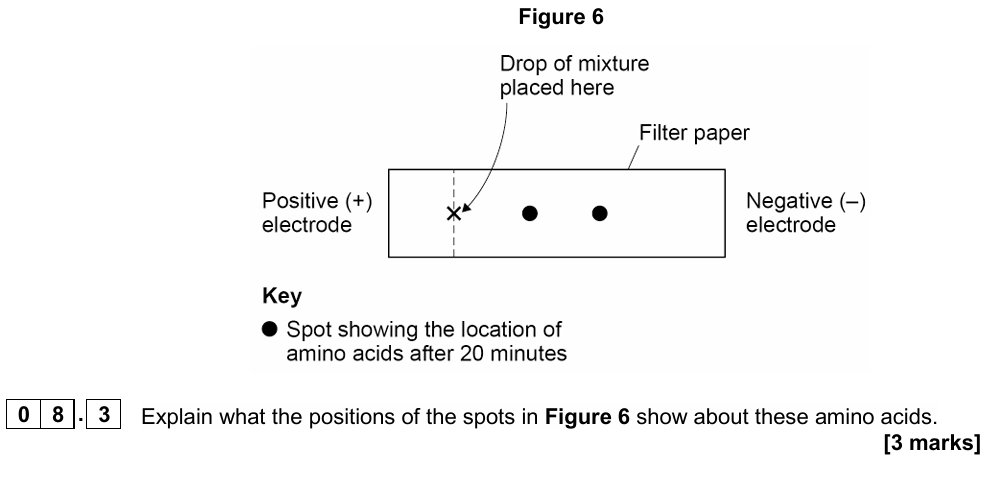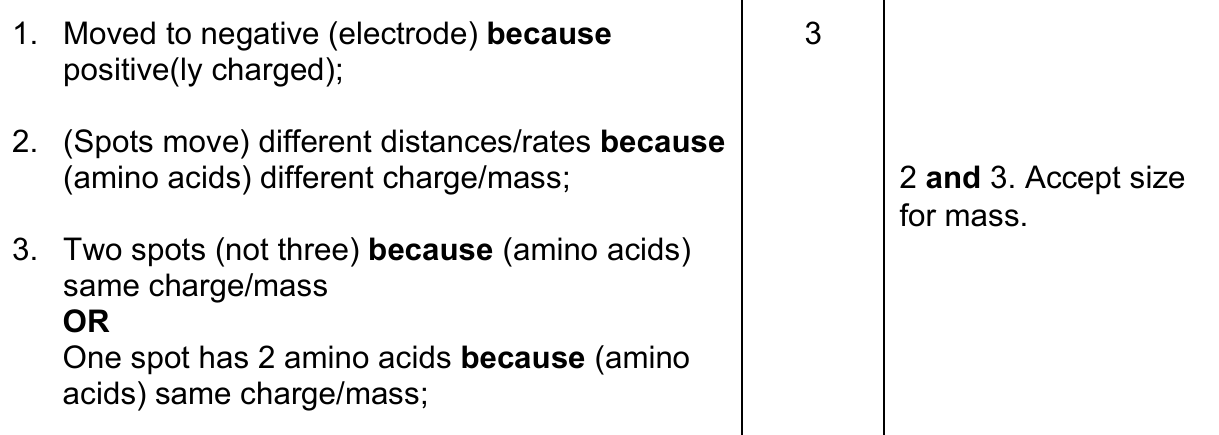PROTEINS
1/15
Earn XP
Description and Tags
Name | Mastery | Learn | Test | Matching | Spaced |
|---|
No study sessions yet.
16 Terms
PROTEINS: WHAT DO THEIR ROLES DEPEND ONE AND EXPAND ON THIS ANSWER?
Roles depend on molectular shape:
FIBROUS: (Alpha helix or Beta pleated, not both)
Insoluble and very stable molecules.GLOBULAR: (Alpha, Beta, or both)
Soluble (because it has hydrophobic and hydrophyllic R-groups)
Carry out metabolic functions.
HOW DOES THE STRUCTURE OF A PROTEIN DEPEND ON THE AMINO ACIDS IT CONTAINS?
Structure is determined by (relative) position of amino acid/R group/interactions;
Primary structure is sequence/order of amino acids;
FIBROUS AND GLOBULAR PROTEIN EXAMPLES:
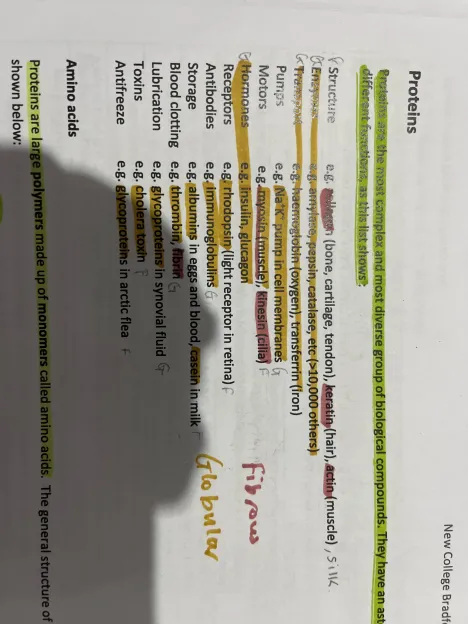
TEMP + ENZYMES:
LOW: Inactive, but undamaged.
Collide rarely, low RoR.
WARM: More collisions, more Ek, more ES-C.
HOT: Optimum, most collisions (most complimentary.
TOO HOT: Denature.
WHAT IS PH?
PH CHANGE OF 1 CHANGES THE [(aq) H+] BY ?
PH 1 = ?
HOW CAN IT BE CALCULATED?
HOW CAN YOU CONTROL IT?
[(aq) H+].
pH CHANGE OF 1 CHANGES THE [(aq) H+] BY 10x.
pH 1 = 0.1moldm-3.
-Log10(H+).
BUFFER SOLUTION.
PH + ENZYME
Alters charges on a.a.
Causes H and ionic to break and reform differently.
COMPETITIVE INHIBITOR
SIMILAR SHAPE TO SUBSTRATE.
ALLOWS IT TO COMPETE WITH THE SUBSTRATE TO BIND TO AS.
FEWER ES-COMPLEXES FORMED AND ROR REDUCED.
EFFECT DEPENDS ON ITS CONC RELATIVE TO [SUB].
NON- COMPETITIVE INHIBITOR
BINDS TO ALLOSTERIC SITE.
CHANGES 3* STRUCTURE OF ENZYME → CHANGES SHAPE OF AS.
SUB CAN’T BIND.
FEWER ES-C.
ROR DECREASE.
EFFECT IS NOT DEPENDANT ON ITS CONC RELATIVE TO [SUB].
IT INACTIVATES THE ENZYME.
FEW ENZYMES MAY REMAIN UNEFFECTED AND REACTION MAY PROCEED AT A SLOW RATE.
SUBSTRATE CONCENTRATION
INCREASING ITS CONC:
AS [SUBSTRATE] INCREASES, ROR INCREASES. (Bc there are more molecules → higher chance of collisions, more ES-complexes.)
UNTIL SATURATION POINT WHERE ACTIVE SITES ARE FULL, ENZYME IS LIMITING.
ROR REMAINS CONSTATE AT A [CERTAIN].
ENZYME CONCENTRATION
As long as there is an excess of substate, [enzyme] —> proportionate ROR.
(Diagonal, dp line.)
But if substrate is limiting, increasing enzyme has no effect on ROR, so ROR will stabilise at constant level.
TEST PROTEINS:
BLUE BIURETS + SHAKE.
LILAC.
The secondary structure of a polypeptide is produced by bonds between amino acids. Describe how.
Two proteins have the same number and type of amino acids but different tertiary structures. Explain why.
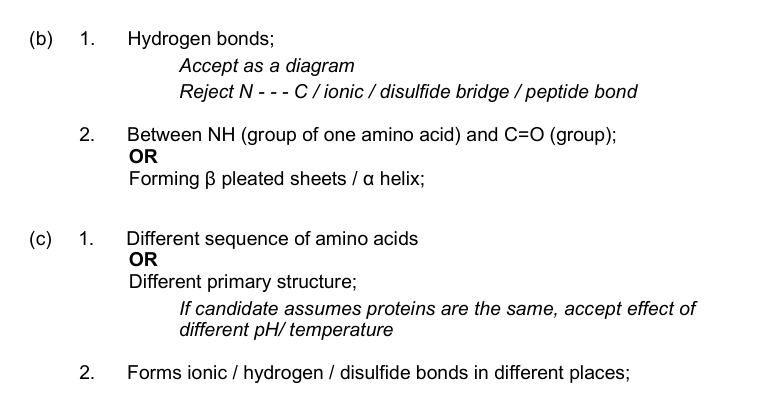
A dipeptide consists of two amino acids joined by a peptide bond. Dipeptides may differ in the type of amino acids they contain. Describe two other ways in which all dipeptides are similar and one way in which they might differ.
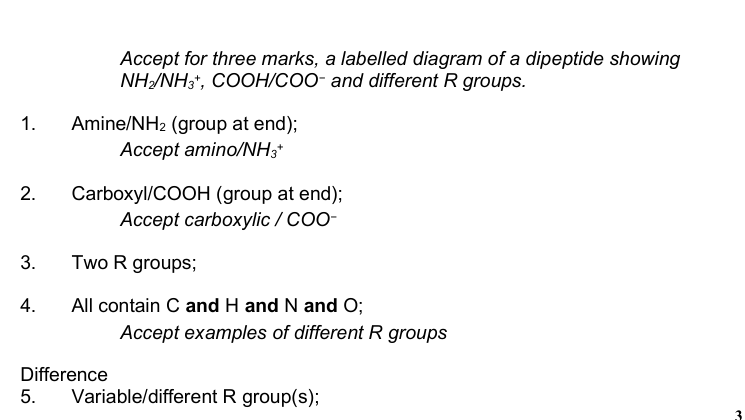
DESC INDUCED FIT AND HOW AN ENZYME ACTS AS A CATALYST?
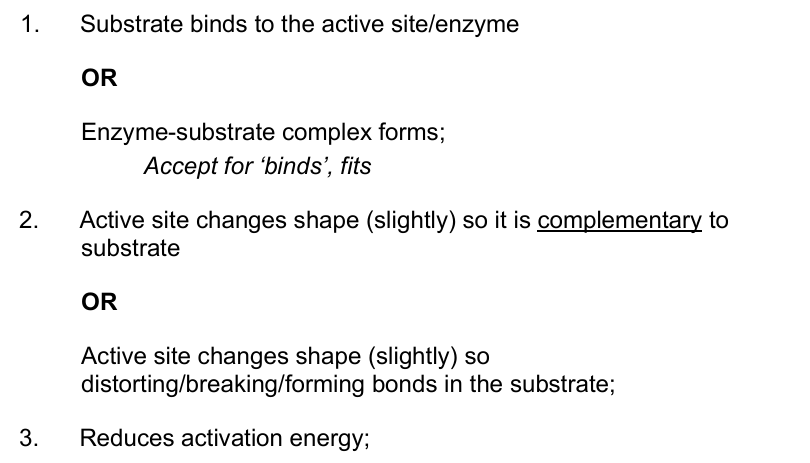
DESCRIBE HOW AMINO ACIDS JOIN TO FORM A POLYPEPTIDE SO THERE IS ALWAYS NH2 AT ONE END AND COOH AT THE OTHER.

